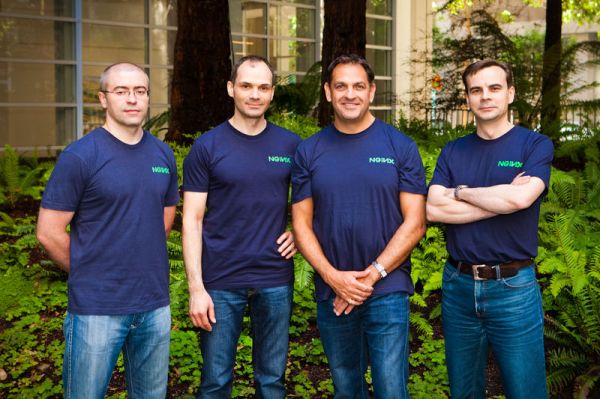The open source NGINX web server (and load balancer, HTTP cache and reverse proxy server) is turning 10 this month and its commercial counterpart, NGINX Plus is celebrating its first birthday at the same time. To mark this moment, the company provided me with its latest user stats and I also had a chance to get a few comments from Gus Robertson, the company’s CEO.
Over the last twelve months, NGINX adoption grew 54 percent, the company tells me, with a 41% market share among the top 10,000 busiest websites. Over the last four years, NGINX adoption grew 400% in total, the company tells me. Those are impressive stats, but what’s maybe even more important to the company is that its commercial service now has 250 paying customers, a growth of 164 percent in Q3 compared to the last quarter.
Robertson tells me that the company is seeing traction across a wide variety of industries, including media and entertainment, e-retailing, technology, finance and education markets. “These accounts are typically looking to deliver applications that function like the large-scale consumer websites but without the development and engineering costs to custom build an application delivery tier,” Robertson noted.
He also told me that when the company first launched its commercial service, the initial focus was on large-scale web applications. That worked well, but Robertson told me that the company quickly realized that “many applications don’t need to scale like the monster web apps but do want to deliver a great user experience with super fast response times, maximum uptime and full mobile capability.” As an example, he cited a banking application for high-wealth clients: that application doesn’t see a lot of traffic, but it still has to offer very fast response times for checking account balances and trade confirmations.
As for the future of NGINX, Robertson told me that one of the main trends he is seeing is application level networking functionality “moving inherently into the application and away from the underlying infrastructure and network.” “The advent of cloud environments, devops teams and technology such as Linux containers are all driving us to true application abstraction. It’s time for the application functionality that’s been tied to the network in the past to be abstracted,” he said. While web servers are at the core of this trend, load balancing, caching, media streaming and security are also a major part of delivering applications. Unsurprisingly, NGINX offers most of this functionality already.
